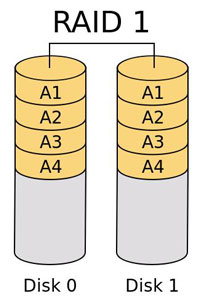In RAID 1 (mirroring without parity or striping), data is written identically to two drives, thereby producing a “mirrored set”; the read request is serviced by either of the two drives containing the requested data, whichever one involves least seek time plus rotational latency. Similarly, a write request updates the stripes of both drives. The write performance depends on the slower of the two writes (i.e. the one that involves larger seek time and rotational latency). At least two drives are required to constitute such an array. While more constituent drives may be employed, many implementations deal with a maximum of only two. The array continues to operate as long as at least one drive is functioning.
Each RAID is evaluated at one of our facilities and a recovery strategy is formed. You are provided with an evaluation report from your dedicated contact. Pricing and turnaround time are quoted, with different options available to match your needs.
When a RAID recovery is approved, it is immediately moved into our 
RAID recovery area. If one or several of the drives in the array are suffering from a physical failure, such as a head crash or spindle problem, our data recovery engineers will correct each issue before the drives move into the next stage of our process.
Before beginning work on any RAID, acedatalab.com makes duplicate backup images of each drive before beginning the complex RAID reconstruction process. By working from images rather than the original drives, you can be assured that there is no chance of additional damage.
Once your case is recovered, your data is copied onto an external hard drive or other form of media and sent overnight back to you. Clones of each drive are kept in a highly secured and strictly controlled laboratory in case of any problems, then deleted using Department of Defense standards to ensure that your data stays 100% confidential.





